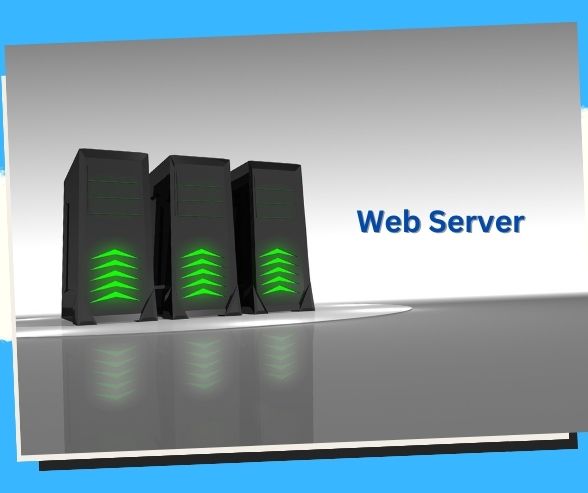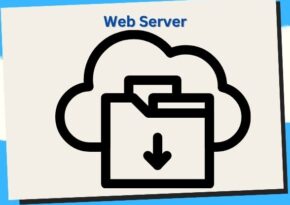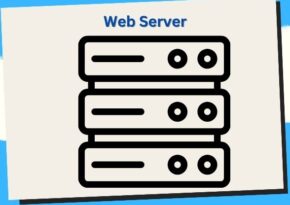
Seamless Transition: A Step-by-Step Guide to Migrating Your Website to a New Hosting Provider
Ready to level up your website’s hosting? Discover our step-by-step guide to seamlessly migrate your website to a new hosting provider. Say goodbye to downtime and hello to improved performance!
Smooth Sailing: A Step-by-Step Guide to Migrating Your Website to a New Hosting Provider 🌐
Embarking on a journey to a new hosting provider can be both exciting and daunting. Whether you’re seeking better performance, improved customer support, or simply a change of scenery, migrating your website to a new host requires careful planning and execution. Fear not! Join us as we navigate the waters of website migration, providing you with a step-by-step guide to ensure a smooth and successful transition to your new hosting provider.
1. Prepare Your Ship: Preparing for the Journey Ahead 🛠️
Before setting sail to your new hosting provider, it’s essential to prepare your website for the migration process:
Backup Your Website: Before making any changes, create a full backup of your website files, databases, and any other relevant data. This ensures that you have a copy of your website in case anything goes awry during the migration process.
Document Your Settings: Take note of your current hosting settings, including DNS records, email configurations, and any custom server configurations. This information will come in handy when configuring your new hosting environment.
Inform Stakeholders: If your website serves a larger audience or client base, inform stakeholders such as customers, subscribers, and collaborators about the upcoming migration. Provide them with relevant information and updates to minimize disruption and maintain transparency.
2. Choose Your New Port: Selecting a Suitable Hosting Provider ⚓
Selecting the right hosting provider is crucial for a successful migration. Consider factors such as performance, reliability, customer support, pricing, and scalability when choosing your new port of call:
Research Hosting Providers: Take the time to research and compare different hosting providers to find one that meets your specific needs and requirements. Look for providers with a track record of reliability, excellent customer support, and positive reviews from other users.
Assess Performance: Evaluate the performance and infrastructure of potential hosting providers, including server hardware, network speed, and uptime guarantees. Choose a provider with fast and reliable servers to ensure optimal performance for your website.
Consider Scalability: Anticipate your website’s future growth and scalability needs when selecting a hosting provider. Choose a provider that offers scalable hosting plans and resources to accommodate your website’s expansion without experiencing downtime or performance issues.
3. Chart Your Course: Initiating the Migration Process 🗺️
With your preparations complete, it’s time to chart your course and initiate the migration process:
Set Up Your New Hosting Account: Sign up for a hosting account with your chosen provider and set up your new hosting environment. Take note of your account credentials and server details for future reference.
Transfer Your Files: Transfer your website files from your old hosting provider to the new one using FTP (File Transfer Protocol) or a file manager provided by your hosting control panel. Ensure that all files are transferred accurately and without any errors.
Migrate Your Databases: Export your website databases from the old hosting provider and import them into your new hosting environment. Test the database connections to ensure that your website functions correctly after the migration.
Update DNS Records: Update your domain’s DNS (Domain Name System) records to point to your new hosting provider’s servers. This process may take some time to propagate across the internet, so be patient and monitor the progress.
4. Navigate Stormy Waters: Troubleshooting and Testing 🌊
As you navigate through the migration process, be prepared to encounter some stormy waters along the way:
Check for Errors: Monitor the migration process closely and check for any errors or issues that may arise. Address any errors promptly and troubleshoot any issues that may affect the functionality of your website.
Test Your Website: Once the migration is complete, thoroughly test your website to ensure that all pages, links, forms, and functionalities are working correctly. Test the website on different devices and browsers to ensure compatibility and responsiveness.
Monitor Performance: Keep an eye on your website’s performance and loading speed after the migration. Use tools such as Google PageSpeed Insights or GTmetrix to analyze performance metrics and identify any areas for optimization.
5. Set Anchor: Finalizing the Migration 🚢
With the migration process complete and your website safely anchored in its new hosting harbor, it’s time to tie up any loose ends and finalize the transition:
Update Settings and Configurations: Update any settings and configurations in your new hosting environment to match those of your old hosting provider. This may include email configurations, server settings, and security configurations.
Test Functionality Again: Perform another round of testing to ensure that all settings and configurations are applied correctly and that your website functions as expected. Address any remaining issues or discrepancies before officially going live with your new hosting provider.
Monitor for Downtime: Keep an eye on your website for any potential downtime or performance issues in the days following the migration. Be prepared to address any issues promptly to minimize disruption to your website visitors.
6. Celebrate Your Success: Smooth Sailing Ahead! 🎉
Congratulations! You’ve successfully navigated the migration process and safely docked your website in its new hosting harbor. Take a moment to celebrate your success and enjoy the benefits of your new hosting provider, including improved performance, reliability, and support.
Smooth Sailing to Your New Hosting Provider
Migrating your website to a new hosting provider may seem like a daunting task, but with careful planning, preparation, and execution, it can be a smooth and seamless process. By following this step-by-step guide and taking the necessary precautions, you can ensure a successful transition to your new hosting provider and enjoy the benefits of improved performance, reliability, and support for your website. Bon voyage! ⛵🚀
Benefits of Migrating Your Website
- Improved Performance: A new hosting provider may offer better server infrastructure and resources, leading to faster loading times and improved website performance.
- Enhanced Security: Upgrading to a more secure hosting provider can protect your website from cyber threats and vulnerabilities, ensuring the safety of your data and visitors.
- Scalability: A new hosting provider may offer scalable hosting plans, allowing your website to accommodate growth and handle increased traffic without downtime or performance issues.
- Better Support: Switching to a hosting provider with reliable customer support can provide peace of mind, knowing that assistance is available whenever you need it.
- Cost Savings: Migrating to a new hosting provider may offer cost savings through competitive pricing, special promotions, or more efficient use of resources.
- Advanced Features: A new hosting provider may offer advanced features such as automated backups, staging environments, and SSL certificates, enhancing the functionality and security of your website.
- Improved Uptime: A more reliable hosting provider can ensure higher uptime for your website, minimizing downtime and ensuring continuous availability for your visitors.
- Geographic Flexibility: Migrating to a hosting provider with servers in different locations can improve website performance for visitors in various regions, leading to a better user experience.
- Better Control: Some hosting providers offer more control over server settings and configurations, allowing you to customize your hosting environment to suit your specific needs.
- Future-Proofing: By migrating to a reputable hosting provider, you can future-proof your website against potential issues and ensure ongoing support and security updates.
Case Studies: Real-life Experiences
- E-commerce Success Story: Sarah, the owner of an online store, migrated her website to a new hosting provider with better performance and security features. As a result, Sarah’s sales increased by 30% due to faster loading times and improved user experience.
- Blog Relaunch: John, a blogger, switched to a new hosting provider to take advantage of advanced features such as automated backups and SSL certificates. With improved reliability and support, John’s blog saw a significant increase in traffic and engagement.
- Agency Expansion: Mark, the owner of a digital marketing agency, migrated his clients’ websites to a new hosting provider with scalable hosting plans. With the ability to handle increased traffic and demand, Mark’s agency attracted new clients and expanded its services.
- Non-profit Website Upgrade: Emily, a volunteer at a charity organization, migrated the organization’s website to a new hosting provider with better security features. With enhanced protection against cyber threats, Emily’s organization gained trust and credibility among donors and supporters.
- Local Business Growth: Lisa, the owner of a local bakery, migrated her website to a new hosting provider with servers closer to her target audience. With improved website performance for local visitors, Lisa’s bakery saw an increase in online orders and foot traffic to her store.
- Portfolio Website Optimization: Michael, a freelance photographer, migrated his portfolio website to a new hosting provider with better control over server settings. With the ability to customize his hosting environment, Michael’s website showcased his work more effectively, attracting new clients and opportunities.
- Educational Platform Expansion: Sarah, the creator of an online learning platform, migrated her website to a new hosting provider with advanced features such as content delivery networks (CDNs) and scalable infrastructure. With improved website performance and reliability, Sarah’s platform attracted more students and grew its user base.
- Tech Startup Relaunch: David, the founder of a tech startup, migrated the company’s website to a new hosting provider with better support and uptime guarantees. With improved reliability and customer service, David’s startup gained credibility among investors and potential partners.
- Freelancer Efficiency: Alex, a freelance web developer, migrated his clients’ websites to a new hosting provider with better scalability and security features. With streamlined management and enhanced protection against cyber threats, Alex’s clients were satisfied with the improved performance and reliability of their websites.
- International Corporation Optimization: John, a representative of a multinational corporation, migrated the company’s global websites to a new hosting provider with servers in different regions. With improved website performance for international visitors, John’s company saw increased engagement and conversions across various markets.
Key Takeaways
- Research Thoroughly: Take the time to research and compare different hosting providers to find the best fit for your website’s needs and requirements.
- Backup Your Data: Before migrating your website, make sure to back up all your files, databases, and settings to prevent data loss or corruption.
- Plan Ahead: Create a migration plan outlining the steps involved and any potential risks or challenges to ensure a smooth transition.
- Communicate with Stakeholders: Inform your team members, clients, and other stakeholders about the migration process and any potential disruptions to minimize confusion and ensure transparency.
- Test Before Launch: Test your website on the new hosting environment before making it live to identify any issues or compatibility issues that need to be addressed.
- Monitor Performance: Keep an eye on your website’s performance and functionality after the migration to ensure everything is running smoothly and address any issues promptly.
- Update DNS Settings: Update your domain’s DNS settings to point to the new hosting provider’s servers to ensure visitors can access your website on the new platform.
- Check for Broken Links: Scan your website for broken links or missing files after the migration to ensure all pages and resources are accessible and functional.
- Implement Security Measures: Set up security measures such as firewalls, malware scanners, and SSL certificates on the new hosting environment to protect your website from cyber threats.
- Seek Support if Needed: Don’t hesitate to reach out to your hosting provider’s support team or seek assistance from a qualified professional if you encounter any issues or need help during the migration process.
FAQ: Frequently Asked Questions
Q1: How long does it take to migrate a website to a new hosting provider?
A1: The time it takes to migrate a website depends on various factors such as the size of the site, complexity of the setup, and the efficiency of the migration process. In general, it can take anywhere from a few hours to a few days to complete the migration.
Q2: Do I need technical expertise to migrate my website to a new hosting provider?
A2: While some technical knowledge may be helpful, many hosting providers offer migration assistance or tools to simplify the process for users with limited technical skills. Alternatively, you can hire a professional web developer or migration service to handle the migration for you.
Q3: Will migrating my website affect my search engine rankings?
A3: Migrating your website to a new hosting provider should not have a significant impact on your search engine rankings as long as the migration is handled properly and redirects are set up correctly. However, it’s essential to monitor your rankings and address any issues that may arise during or after the migration.
Q4: Can I migrate my website myself, or should I hire a professional?
A4: It depends on your technical skills and the complexity of your website. While some users may be able to migrate their websites themselves using migration tools provided by the hosting provider, others may prefer to hire a professional to ensure a smooth and seamless migration process.
Q5: What should I do if something goes wrong during the migration process?
A5: If you encounter any issues or complications during the migration process, don’t panic. Contact your hosting provider’s support team for assistance or seek help from a qualified professional to troubleshoot and resolve the problem.
Q6: Will I lose any data or files during the migration process?
A6: While data loss is rare during website migrations, it’s essential to back up all your files, databases, and settings before starting the migration process to minimize the risk of data loss or corruption. Additionally, testing your website thoroughly after the migration can help identify and address any missing or corrupted files.
Q7: Can I migrate multiple websites at once to a new hosting provider?
A7: Yes, many hosting providers offer tools or services to facilitate the migration of multiple websites simultaneously. However, it’s essential to plan and organize the migration carefully to ensure each website is migrated successfully without issues.
Q8: Will migrating my website affect my email accounts or other services associated with my domain?
A8: Migrating your website should not affect your email accounts or other services associated with your domain as long as you update your DNS settings correctly to point to the new hosting provider’s servers. However, it’s essential to verify and test all associated services after the migration to ensure everything is functioning correctly.
Q9: Can I cancel my current hosting plan after migrating my website to a new provider?
A9: Yes, once you have successfully migrated your website to a new hosting provider and verified that everything is working correctly, you can cancel your current hosting plan. However, it’s essential to review your current hosting provider’s cancellation policy and ensure there are no contractual obligations or penalties for early termination.
Q10: How often should I migrate my website to a new hosting provider?
A10: There is no set timeframe for migrating your website to a new hosting provider, as it depends on various factors such as your current hosting provider’s performance, reliability, and pricing, as well as your website’s growth and changing needs. However, it’s a good idea to periodically evaluate your hosting provider and consider migrating if you encounter recurring issues or if better options become available.
Conclusion
Migrating your website to a new hosting provider may seem daunting, but with the right plan and approach, it can be a smooth and seamless process. By understanding the benefits, learning from real-life case studies, and following the key takeaways and FAQs outlined in this guide, you can ensure your website migration is successful and stress-free. Whether you’re upgrading to a more reliable hosting provider, seeking better performance and security, or simply exploring new options, this step-by-step guide will help you navigate the migration process with confidence. Here’s to a new chapter of success and growth for your website! 🌟
Key Phrases
- Website migration guide
- Migrating to new hosting
- Step-by-step migration process
- Website transfer to new provider
- Seamless migration steps
- Smooth website transition
- Relocating website hosting
- Easy website migration tips
- Hassle-free hosting switch
- Migrate website without downtime
Best Hashtags
- #WebsiteMigration
- #HostingUpgrade
- #SmoothTransition
- #NewHostingProvider
- #SeamlessMigration
- #WebsiteTransfer
- #HostingSwitch
- #HassleFreeHosting
- #NoDowntime
- #WebsiteRelocation
Save/Share this post with QR CODE
Disclaimer
This article is for informational purposes only and does not constitute endorsement of any specific technologies or methodologies and financial advice or endorsement of any specific products or services.
📩 Need to get in touch?
Feel free to Email Marketing Smartly for comments, suggestions, reviews, or anything else.
We appreciate your reading. 😊Simple Ways To Say Thanks & Support Us:
1.) ❤️GIVE A TIP. Send a small donation thru Paypal😊❤️
Your DONATION will be used to fund and maintain MKTGS.com
Subscribers in the Philippines can make donations to mobile number 0917 906 3081, thru GCash.
3.) 🛒 BUY or SIGN UP to our AFFILIATE PARTNERS.
4.) 👍 Give this news article a THUMBS UP, and Leave a Comment (at Least Five Words).
AFFILIATE PARTNERS

World Class Nutritional Supplements - Buy Highest Quality Products, Purest Most Healthy Ingredients, Direct to your Door! Up to 90% OFF.
Join LiveGood Today - A company created to satisfy the world's most demanding leaders and entrepreneurs, with the best compensation plan today.











Comments (0)